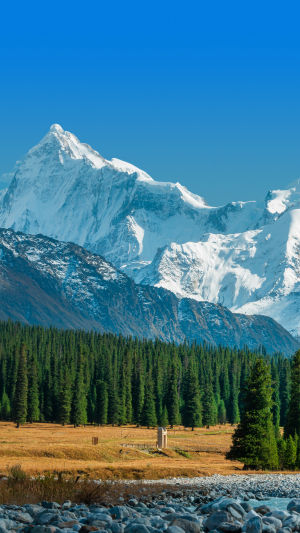The history of humankind can be described as the history of conquering nature. Many countries have their own professional mountaineering teams, which spend a lot of manpower and material resources to climb to the top of mountains with very harsh natural conditions.
Although climbing to the top of these mountains is of great significance to scientific research, it cannot produce direct economic benefits. However, countless climbers still rush to the top of the mountains without hesitation.
Today, let's take stock of the highest peaks on all continents of the world and experience the courage and adventurous spirit of generations of climbers!
1. Vinson Peak, Antarctica
Vinson Peak is the highest peak in Antarctica at 5140 meters above sea level. Vinson Peak is also the main peak of the Ellsworth Range, located between Sentinel and Heritage Ridge. The coordinates of Vinson Peak are located at 78 degrees 35 minutes south latitude and 85 degrees 25 minutes west longitude.
It was discovered in 1935 by the American explorer Ellsworth. Vinson Peak is the last of the highest peaks on all continents to be summited. It requires climbers to be experienced enough to deal with extremely cold temperatures, high winds, and high altitudes.
2. Mount Everest in Asia
Mount Everest is located on the Himalayas at the border of China and Nepal and is covered with snow all year round. The peak experiences low temperatures all year round.
Mount Everest is 8848.86 meters above sea level and grows 1.2 centimeters every year, making it the highest peak in the world. Mount Everest is in the shape of a giant pyramid, with huge glaciers up to 26 kilometers long.
New Zealand mountaineer Edmund Hillary reached the summit of Mount Everest at 11 am on May 29, 1953, becoming the first person to conquer Mount Everest, the world's highest peak.
3. Aconcagua, South America
Aconcagua is the highest peak in South America at 6,964 meters above sea level. It belongs to the southern section of the Andes in the Cordillera Mountains. Aconcagua is the highest extinct volcano on Earth.
In 1897, humans climbed Aconcagua for the first time, and investigations confirmed that it was composed of volcanic rocks. The shape of the mountain is conical, and the top of the mountain has a sunken crater.
It is a typical volcano. After checking the information about the volcanic eruption in this area, it was not found that it had erupted again after humans arrived, so it became the world's recognized highest-extinct volcano.
4. Denali Mountain, North America
Denali was formerly known as Mount McKinley. It is the only peak in North America that exceeds 6,000 meters above sea level, making it undoubtedly the highest peak on the continent.
Its extreme northern location makes it the third most prominent mountain on Earth after Everest and Aconcagua, and the third tallest and northernmost of the seven peaks.
5.Mount Elbrus, Europe
Mount Elbrus is located in the Caucasus Mountains in Europe and is the highest peak on the European continent. Mount Elbrus is known as one of the most beautiful mountains in Europe and the dividing line between Europe and Asia.
6.Mount Kilimanjaro, Africa
Mount Kilimanjaro is located in northeastern Tanzania, approximately 160 kilometers south of the East African Rift Valley. It is the highest mountain in Africa.
The main body of the mountain extends for nearly 80 kilometers from east to west and is mainly composed of three extinct volcanoes: Kibo, Mawensi, and Gila.
7. Mount Jaya, Oceania
Mount Jaya, also known as Mount Kalamata or Mount Pearl, is the highest peak in Oceania, located in the Sudirman Range of the Jayawijaya Mountains in Papua Province, Indonesia. The mountain's altitude is between 4,884 meters and 4,884.43 meters.





